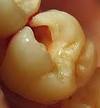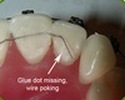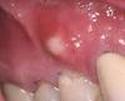Have Tooth Pain or a Dental Injury?
While tooth pain is not always unforeseen, dental injuries occur when we least expect it. The pain usually involves the teeth or gingiva (gum) areas of the mouth and when it happens, even when minor, its usually a sign of a problem that could worsen. Seeing a dentist immediately can minimize damage to the teeth, gums, and supporting bone areas. But did you know that short-term action can be taken for tooth pain until you're able to see the dentist? In many cases, knowing what to do can mean the difference between saving and losing a tooth.
| If you have a dental emergency that involves severe tooth pain, clove oil, which contains eugenol, can be used as a pain reliever. After a wisdom teeth extraction, a condition known as dry socket can develop, causing pain or discomfort. This is due to the nerve endings being exposed to air. To ease the pain, clean the socket with a saline solution, then place a piece of sterile gauze or cotton soaked in clove oil into the socket. |
Other products recommended for tooth pain include analgesics such as acetaminophen and ibuprofen and ice or heat compresses. A dentist can also prescribe medication as well. For any dentist emergency, comply with any instructions for follow-up care. Which may include reassessment, multiple visits, or a referral to a dental specialist.
Managing Tooth Pain

If your dental emergency involves severe tooth pain, clove oil, which contains eugenol, can be used as a pain reliever. Apply a drop with a cotton swab to relieve the pain. After a wisdom teeth extraction, a condition known as dry socket can develop. This is because nerve endings are being exposed to air. After cleaning the socket with a saline solution, place a piece of sterile gauze or cotton soaked in clove oil in the socket to lessen the tooth pain.
Analgesics such as acetaminophen and ibuprofen are also recommended to relieve tooth pain. Both are anti-inflammatory. Ice and/or heat are also frequently recommended. Your dentist can also prescribe additional medications if necessary. For any dentist emergency, comply with any instructions for follow-up care. Proper treatment often means reassessment, multiple visits, or referral to a dental specialist.
Tooth Pain and Specific Dental Emergencies

This page offers information on handling tooth pain associated with the following dental problems:
-
Broken or Cracked Tooth
Possible Broken Jaw
Knocked Out Tooth
Objects Caught Between Teeth
Lost Fillings
Lost Crowns
Tooth Pain (Toothaches)
Broken Brace Wires or Other Complications
Dental Abscesses
Soft Tissue Injuries
Temporary Crowns
Broken or Cracked Tooth

If possible, rinse and save any broken pieces. Also rinse the mouth with warm water. If there is bleeding, place a piece of gauze to the area for about 10 minutes or until the bleeding stops. If tooth pain develops as a result of swelling at the area of the broken tooth, use a cold compress to keep the swelling to a minimum. Call your dentist immediately.
Possible Broken Jaw
To control swelling, apply cold compresses to the affected area, then proceed to a dentist or hospital emergency room.
Knocked Out Tooth
Holding the tooth by the crown, rinse its root in water. Be careful not to scrub it and remove any attached tissue fragments. Gently try to reinsert the tooth back into its socket. If this can't be done, place the tooth in a cup of milk, in water with a pinch of salt, or in a product such as Save-a-Tooth.
IMPORTANT: You must get to a dentist within 1 hour. Knocked out teeth have the highest chance of being saved if seen by a dentist and returned to their socket within 1 hour of being knocked out. DON'T FORGET TO TAKE THE TOOTH WITH YOU!
Objects Caught Between Teeth

Never use sharp instruments to remove objects stuck between your teeth. If an object gets caught between your teeth, try to gently remove it using dental floss. If you can't remove it with the floss, contact a dental provider. Dental floss is one item that should always be in your family's medicine cabinet.
Lost Fillings
 |
As a temporary measure, use an over-the-counter dental cement or stick a piece of sugarless gum into the dental cavity. Avoid using sugar-filled gum, as it can cause tooth pain. You are advised to see a dentist as soon as possible. |
Lost Crowns

If a dental crown falls off, make an appointment to see the dentist as soon as possible and bring the crown with you. If you can't get to the dentist right away and the tooth is causing pain, use a cotton swab to apply a little clove oil to the area. If at all possible, coat the inner surface of the crown with an over-the-counter dental cement or denture adhesive and place the dental crown back over the tooth.
Important: Do not use Super Glue to recement the temporary crown. If you do and the crown is removed by the dentist during the examination, it may damage the area that has been prepared for the final crown.
Toothaches
If you have a toothache, first rinse the mouth with warm water to clean it. Then use dental floss or an interdental cleaner to gently remove food or other debris between the teeth. You can apply a little clove oil to the area to subside the pain. If your mouth is swollen, apply a cold compress to the outside of your mouth or cheek. Never put aspirin or any other painkiller against the gums near the aching tooth as it can cause the tissue to burn. Seek dental treatment as soon as possible.

Partially Dislodged Tooth

For teeth that are partially dislodged, it is important to get dental treatment quickly. If you experience pain or swelling, apply a cold compress to the outside of the mouth. You can also take an over-the-counter pain reliever such as Tylenol or Advil, if needed.
Broken Brace Wires or Other Complications

When teeth that have orthodontic braces move, sometimes, the end of the arch wire becomes displaced, causing it to poke the back of the cheek. If a wire breaks or sticks out of its bracket or band and is poking the inside of your mouth, causing pain, it may be necessary to bend the edge of the wire.
To do this, use a tweezer or the eraser end of a pencil to push the wire into a more comfortable position. If this cannot be done, cover the end of the wire with dental wax, a small cotton ball, or piece of gauze to cushion the loose wire. You must see your orthodontist asap so that the wire can be clipped, or a painful mouth ulcer may form. Do not try to cut the wire on your own.
In addition to breaking wires, some patients may experience allergic reactions, mouth sores, or white spot lesion problems with their new braces.
Allergic reactions: Because of the use of latex rubber in elastics or the metal in braces, there is a slight chance of having an allergic reaction. If you believe you are allergic to your braces, contact your orthodontist immediately.
Mouth sores: Irritation from some parts of your braces may result in mouth sores. Some products that can be used to sooth the area are oral rinses, dental wax, dental silicone - any products designed to help in the healing process.
White Spot Lesions: Because of the way braces are designed, it is difficult to effectively brush and floss the teeth to remove plaque. This increases the risk for tooth decay and a condition known as white spot lesion. White spot lesion is the result of plaque dissolving away the mineral content of a tooth's enamel. This process changes the the tooth's mineral content and changes the appearance of tooth enamel to an opaque whitish color. When plaque accumulates around a person's braces, white spot lesions form on the area of the tooth enamel that is around the orthodontic brackets. The enamel that is underneath the orthodontic bracket is protected. So when the braces are removed, a white spot lesion outlining the original position of the orthodontic bracket is apparent, effecting the cosmetic appearance of the tooth. Additional dental work (and more money) will be needed in order to correct this problem.

If you wear braces, it is extremely important to take your time and properly clean your teeth to avoid getting white spot lesions. The video above, provided courtesy of Fry Orthodontic Specialists, illustrates the proper way to clean teeth which have braces.
Dental Abscesses

An abscess is a collection of infected material (pus) resulting from bacterial infection in the center (pulp area) of a tooth. Abscess can become quite painful, especially when inflammation of the tissues occur. During an abscesses growth, a collection of pus occurs, becoming progressively painful until it either ruptures and drains on its own or is drained by a dentist or doctor surgically. Sometimes the infection can progress to the point where swelling threatens to block the airway, causing breathing difficulties.
Dental abscesses can also cause illness with such symptoms as fever, chills, nausea, sweats and vomiting. The signs of an abscess typically include, but are not limited to, cavities, gum inflammation, oral swelling, tenderness with touch, pus drainage, and sometimes difficulty fully opening your mouth or swallowing.
To treat abscesses, some dentists may cut it open to allow the pus to drain. Unless it ruptures on its own, this is the only way that the infection can be treated. The dentist may then prescribe a pain relievers or antibiotics. If abscess has extended to the floor of the mouth or to the neck, it may need to be drained in the operating room under general anesthesia.
If an abscess ruptures by itself, rinse the mouth regularly with warm water. This will not only cleanse the mouth, but will also encourage drainage. Do not place aspirin directly over the tooth or gums because this increases irritation of the tissues and can result in mouth ulcers. Proceed to your dentist for evaluation and further treatment.
Note: If you are currently suffering from a dental abscess, there is a product currently on the market called The Ultimate Gum Solution™. This product has been clinically proven to effectively stop the pain associated with an abscess, as well as destroying the infection quickly and without harmful side effects. It has been noted to be an affordable and effective alternative to costly dental procedures, and a valuable addition to regular dental care.
Soft Tissue Injuries
Injuries to the soft tissues, which include the tongue, cheeks, gums and lips, can result in bleeding. To control the bleeding, rinse your mouth with a mild salt-water solution, then use a piece of moistened gauze or tea bag to apply pressure to the site for about 15 to 20 minutes. Use a cold compress on the outside of the mouth to relieve pain. If bleeding persists, continue to apply pressure until you can see your dentist, or proceed to the nearest hospital emergency room.
Temporary Dental Crowns - Sensitivity, Swelling or Displacement
Sensitivity - If you experience any sensitivity at the site of the temporary crown, consider using such desensitizing products as GoSMILE Zen Toothpaste or any other pain relief product, like Orajel - its unique formula relieves painful sensitivity due to cold and contact and seals the sensitive area to protect against the return of sensitivity for up to 28 days.
Swelling and Discomfort - If swelling or discomfort occurs, try rinsing with warm salt water at least 3 times a day.

Loose or Detached Temporary Crown - Replacing the temporary crown is a dentist emergency that requires immediate attention. It only takes a short time for teeth to move if the temp is not put back into its proper position. This could affect the final fit of the permanent crown. restoration significantly causing to fit improperly. If this happens, new impressions will need to be taken again. Also, the dentine of the prepared tooth being exposed to air for a long time can cause the nerve to become dead, resulting in a necessary root canal.
If your temporary crown becomes loose at any point during the process, place it back on your tooth immediately using a denture adhesive paste. Under no circumstances should you use ordinary household glue (e.g., Crazy Glue).
The eugenol used in many over-the-counter temporary cements or dental pain relievers can interfere with the cementation of the final crown (especially if the crown to be bonded is porcelain). It is suggested that you call your dentist before using any products which contains eugenol.
If you have difficulty replacing or keeping the temp in place, see your dentist for assistance. In most instances, there should be no charge if your final crown is not yet completed. If the crown is completed, but payment is still being made, some dentists may charge a small fee. If the temp is being recemented by a different dentist, in most cases, expect to pay for the service.
Tooth Pain Precautions
Some of the things you can do to protect your teeth and avoid experiencing tooth pain include:
- Wearing a dental mouth guard during sports or other activities that pose a risk to your oral health. Mouth guards can reduce the chances of damage to the soft tissues.
- Avoid chewing ice, popcorn kernels and hard candy. These items have the ability to crack a tooth.
- Do not use your teeth in place of scissors.
- Never avoid seeing a dentist if you are experiencing tooth pain. Early treatment is often less expense.
- Be prepared for dental emergencies. Buy oral care products for home and travel.
Once you have subsided tooth pain using one of the methods outlined above, if you have not already done so, please contact your dentist. If you do not have a dentist and need assistance with locating a dental provider in your area, consider using a dental referral service to find an affordable dentist in your area.
Tooth Pain Products

For centuries, cloves (Syzygium aromaticum) have been used medicinally and as culinary spices. The evergreen from which cloves grow was originally found in the southern Philippines. It is the plant's flower bud that is used for both flavoring and from which the essential oil is extracted. Clove oil has both antibacterial and painkilling properties and is used often in dentistry, specifically dental emergencies, as a form of medicine to relieve or soothe tooth pain. This is because clove oil lessens the sensitivity of the brain or nervous system, and when applied directly to the gums, numbs tooth pain.
I hope that you found this page on tooth pain informative. Stay up-to-date with the latest news and information on free and affordable dental work and the latest innovations in dentistry by joining our newsletter.

